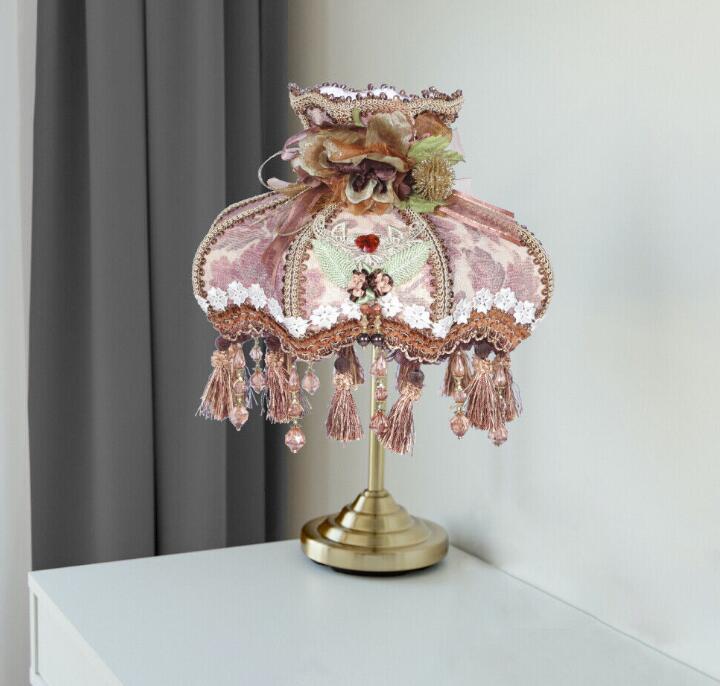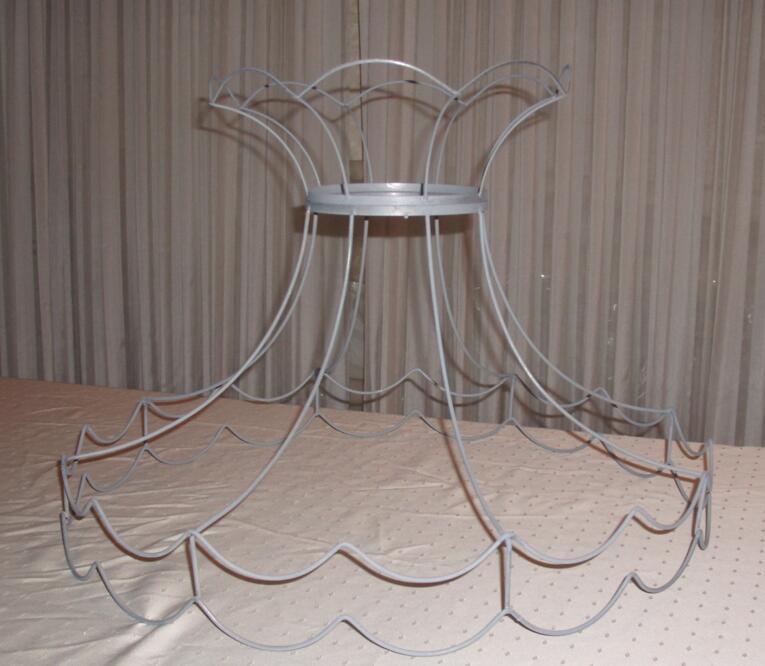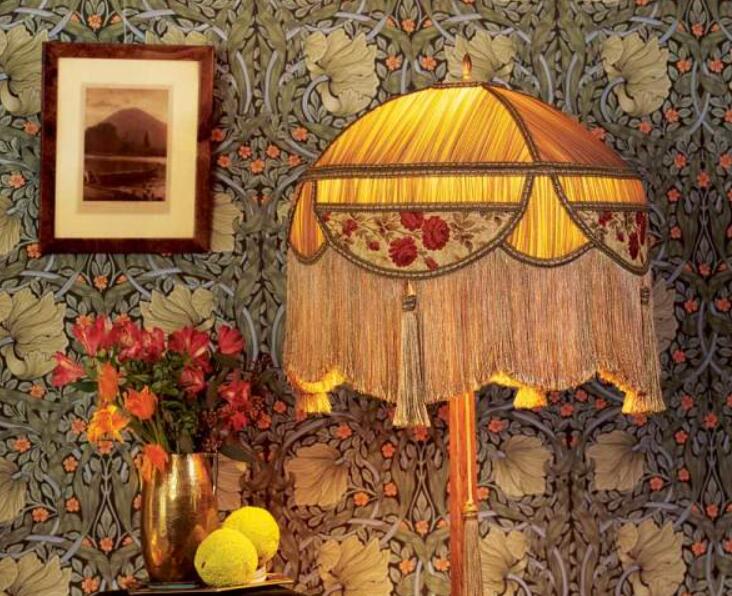Victorian lamp shades are a timeless and elegant addition to any decor. They are characterized by their bell shape, intricate fabric patterns, and fringe or trim detail. These lamp shades were popular during the Victorian era, which spanned from 1837 to 1901, and were often made by hand. Today, you can make your own Victorian lamp shade to add a touch of classic beauty to your home.
To make your own Victorian lamp shade, you will need some basic materials and sewing skills. The process may seem daunting at first, but with some patience and attention to detail, you can create a beautiful lamp shade that will be a unique addition to your home decor. In this article, we will provide a step-by-step guide to help you make your own Victorian lamp shade, from choosing your fabric to finishing touches and care and maintenance. Let’s get started!
Materials Needed To Prepare
To make your own Victorian lamp shade, you’ll need a few basic materials. Here’s what you’ll need:
Fabric
When choosing your fabric, you’ll want to consider both the type of fabric and the color or pattern. For authenticity, consider using a silk or satin fabric, which were commonly used during the Victorian era. Alternatively, you can use a cotton or linen fabric.
As for color and pattern, Victorian lamp shades often featured intricate patterns and bold colors. You can choose a patterned fabric that complements your decor, or go for a solid color that contrasts with your lamp base.
Lampshade Frame
The lampshade frame is the structure that holds the fabric in place and gives the shade its shape. You can find lampshade frames in various sizes and shapes, including bell-shaped frames that are typical of Victorian lamp shades. Make sure to choose a frame that will fit your lamp base.
Fringe or Trim
Adding fringe or trim to the edges of your lamp shade is a hallmark of Victorian style. You can use beaded or tasseled trim, or opt for a simple fringe in a contrasting color. Make sure to choose a trim that will complement your fabric.
Glue or Needle and Thread
To attach your fabric to the lampshade frame and add trim, you’ll need either fabric glue or a needle and thread. Fabric glue is a quick and easy option, while needle and thread will give you a more secure attachment. Make sure to choose a glue or thread that is appropriate for your fabric.
Scissors, Ruler, and Pins
Lastly, you’ll need some basic cutting and measuring tools. A pair of fabric scissors will help you cut your fabric to size, a ruler will ensure your fabric is measured accurately, and pins will help you hold the fabric in place while you attach it to the frame.
With these materials in hand, you’re ready to start assembling your Victorian lamp shade!
Choosing Fabric Before Cutting
Choosing the right fabric is an important part of making a Victorian lamp shade. The type of fabric you choose can impact the overall look and feel of the shade. Here are some things to consider when choosing your fabric:
Types of Fabrics
During the Victorian era, silk and satin were the most common fabrics used for lamp shades. These fabrics have a luxuriant look and feel that can add a touch of elegance to any room. They also tend to drape well, which is important for creating the bell shape of a Victorian lamp shade.
If you prefer a more budget-friendly option, cotton or linen fabrics can also be used for a Victorian lamp shade. These fabrics tend to be stiffer than silk or satin, so they may not drape as well. However, they can still create a beautiful and functional lamp shade.
Color and Pattern
Victorian lamp shades were often characterized by their bold colors and intricate patterns. When choosing your fabric, consider the color and pattern of your lamp shade. You may want to choose a patterned fabric that complements the colors of your room, or a solid color that provides a contrast to your lamp base.
Popular patterns during the Victorian era included damask, floral, and paisley. These patterns can create an ornate and luxurious look that is perfect for a Victorian lamp shade.
Ultimately, the choice of fabric is up to you. Choose a fabric that you love and that complements your decor. Remember, you’ll be looking at your lamp shade every day, so make sure it’s a fabric that makes you happy!
Assembling the Lampshade Frame
Once you’ve chosen your fabric, it’s time to assemble the lampshade frame and attach the fabric. Here’s how:
Measuring and Cutting the Fabric
The first step is to measure and cut your fabric to size. Measure the height and circumference of your lampshade frame and add an extra inch to each measurement for seam allowance.
Using a ruler and scissors, carefully cut your fabric to the correct size. Take care to cut straight and even lines to ensure that your lampshade looks neat and professional.
Attaching Fabric to the Frame
Next, you’ll need to attach your fabric to the lampshade frame. There are two common methods for attaching fabric to a lampshade frame:
- Fabric Glue: For a quick and easy option, fabric glue can be used to attach the fabric to the frame. Apply the glue to the frame and press the fabric in place, smoothing out any wrinkles or bubbles.
- Needle and Thread: For a more secure attachment, use a needle and thread to sew the fabric directly to the frame. Use a backstitch or whipstitch to attach the fabric to the frames, taking care to hide any stitching in the seam allowance.
Whichever method you choose, take care to keep the fabric taut as you attach it to the frame. This will help ensure that your lamp shade has a smooth and even surface.
Adding Fringe or Trim
Once the fabric is attached to the frame, it’s time to add the fringe or trim. This is where you can really let your creativity shine! Here are some options for fringe and trim:
- Beaded Trim: Add a touch of sparkle and elegance to your Victorian lamp shade with beaded trim. Choose a bead color that complements your fabric.
- Tasseled Trim: Tassel trim is another classic option for a Victorian lamp shade. Choose a color and style that complements your lamp base.
- Fringe: A simple fringe in a contrasting color can add just the right touch of whimsy to your lamp shade.
To attach the fringe or trim, use fabric glue or a needle and thread. Take care to keep the edge of the trim straight and even as you attach it to the fabric.
Once your trim is attached, your Victorian lamp shade is complete! Fit it onto your lamp base and enjoy the beautiful glow it creates.
Care and Maintenance for Long-term Use
With proper care and maintenance, your Victorian lamp shade can last for many years. Here are some tips for keeping your lamp shade looking its best:
Cleaning
To clean your lamp shade, use a soft-bristled brush or a lint roller to remove any dust or debris. For more stubborn stains, you can use a damp cloth and a mild detergent. Do not scrub too hard, as this can damage the fabric.
Storage
When not in use, store your Victorian lamp shade in a cool, dry place, away from direct sunlight. You may want to cover it with a cloth or piece of fabric to protect it from dust and debris.
Replacements
If your Victorian lamp shade becomes damaged or worn over time, you can easily replace it with a new lamp shade. Most lampshade frames can be reused, so simply remove the old fabric and attach the new fabric using the methods described above.
By following these simple care and maintenance tips, your Victorian lampshade will continue to add beauty and elegance to your home for years to come.
Conclusion
In conclusion, creating your own Victorian lampshade can be a rewarding experience that allows you to express your creativity and personal style. By using various fabrics, trims, fringes, and decorative elements, you can customize your lampshade to fit any room and provide a timeless elegance that will never go out of style. Whether you’re looking to add some sophistication to your home or simply enjoy the satisfaction of a DIY project, a Victorian lampshade is a great choice. So why not try making one yourself and see what kind of beauty and charm you can create?



